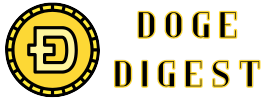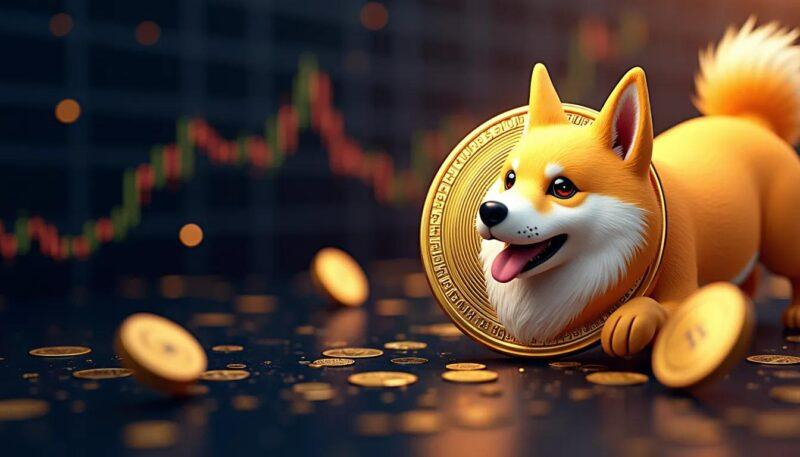In the ever-expanding universe of cryptocurrency, Dogecoin has captured the hearts of many with its playful origins and enthusiastic community. But beyond the memes and market rallies lies a crucial responsibility: safeguarding your digital treasure. Just as a trusty dog keeps watch over its territory, securing your Dogecoin requires vigilance and the right tools. This article delves into practical tips and strategies to help you protect your Dogecoin wallets, ensuring that your investment remains safe in the unpredictable world of crypto. Whether you’re a seasoned hodler or a curious newcomer, understanding wallet security is the first step toward confidently navigating the digital frontier.
Choosing the Right Wallet for Your Dogecoin
When it comes to safeguarding your Dogecoin, the wallet you choose plays a pivotal role in balancing convenience with security. There are various types of wallets available-from online web wallets offering quick access, to hardware wallets designed for maximum protection. Understanding your priorities and how you plan to use your Dogecoin will help narrow down the ideal option.
Software wallets are user-friendly and accessible on desktops and mobile devices, making them perfect for those who engage in frequent transactions. However, they are connected to the internet, which introduces certain vulnerabilities. For enhanced protection, you might lean toward hardware wallets, which store your private keys offline, significantly reducing the risk of hacking or theft. Another interesting option is paper wallets, a physical printout of your keys that can be securely stored offline.
Consider the following key aspects when making your choice:
- Security features: Two-factor authentication, multi-signature support, and encryption.
- Accessibility: Ease of transaction and compatibility with your devices.
- Backup options: How easy is it to recover your wallet if you lose the device?
- Community trust: Well-reviewed wallets with an active development team and community support.
| Wallet Type | Best For | Pros | Cons |
|---|---|---|---|
| Hardware | Long-term storage | Offline security, durable | Higher upfront cost, less convenient |
| Software | Daily use | Quick access, easy to use | Vulnerable to online threats |
| Paper | Cold storage | Offline, no digital hack risk | Easily lost or damaged |
Enhancing Security with Two-Factor Authentication
Adding an extra layer of protection beyond just a password is crucial in today’s digital landscape. By integrating a secondary verification step, you create a formidable barrier against unauthorized access. This method typically requires a dynamic code generated on your mobile device or sent via SMS, ensuring that only the legitimate wallet owner can complete the login process.
Key benefits of this approach include:
- Reduced Risk of Hacks: Even if your password is compromised, the second factor prevents immediate access.
- Real-Time Alerts: Authentication apps often notify you of login attempts, keeping you informed.
- Simple Implementation: Most reputable wallets support popular authentication methods like Google Authenticator or Authy.
| Authentication Method | Pros | Cons |
|---|---|---|
| Authenticator Apps | Offline & Secure | Requires smartphone |
| SMS Codes | Easy Setup | Vulnerable to SIM swapping |
| Hardware Tokens | Highly Secure | Additional Cost |
The Importance of Regular Backup and Recovery Plans
Data loss can strike unexpectedly, whether from hardware failure, accidental deletion, or cyberattacks. For Dogecoin holders, this means the risk of losing access to your digital assets forever. Establishing a routine backup process ensures that your wallet’s private keys and recovery phrases are safely stored, giving you peace of mind and control over your funds. Think of it as creating a safety net that catches you before a misstep becomes irreversible.
Implementing multiple recovery strategies is equally vital. Physical backups like encrypted USB drives or printed paper wallets should be kept in secure, separate locations to prevent a single point of failure. Digital backups, encrypted and stored in trusted cloud services or password-protected devices, further diversify your recovery options. By diversifying, you reduce the risk of losing everything to theft, fire, or simple human error.
Below is a simple matrix outlining the pros and cons of common backup methods to help you decide what suits your needs best:
| Backup Method | Advantages | Limitations |
|---|---|---|
| Paper Wallet | Offline, immune to hacking | Prone to physical damage or loss |
| Encrypted USB Drive | Portable, quick access | Susceptible to theft or hardware failure |
| Cloud Storage (Encrypted) | Accessible anywhere, scalable | Potential exposure to cyber threats |
Safe Practices for Managing Private Keys
Keeping your private keys secure is the cornerstone of protecting your Dogecoin holdings. Start by storing your keys offline in a physical form-think hardware wallets or even a well-hidden paper backup. Avoid digital copies on cloud services or unencrypted devices, as these are vulnerable to hacking attempts and malware. Consider using a secure, encrypted USB drive exclusively for your keys, and keep it in a location that only you can access.
Another powerful safety habit is implementing multi-factor authentication (MFA) wherever possible, particularly on platforms linked to your wallet management. This extra layer ensures that even if your key is compromised, unauthorized access remains unlikely. Regularly update your security protocols and be cautious about phishing schemes that trick you into revealing sensitive information.
Below is a quick reference table of recommended private key practices alongside common pitfalls to avoid:
| Best Practices | Common Mistakes |
|---|---|
| Store keys offline in hardware wallets | Saving keys in email or cloud storage |
| Use encrypted backups on physical media | Sharing your key via messenger apps |
| Enable multi-factor authentication | Ignoring software updates for wallets |
Recognizing and Avoiding Common Crypto Scams
In the fast-paced world of Dogecoin and cryptocurrencies, not every offer is what it seems. Fraudulent schemes often disguise themselves as lucrative investment opportunities, promising huge returns with minimal risk. Be especially wary of unsolicited messages or suspicious websites urging immediate action – these are classic red flags. Remember, if it sounds too good to be true, it probably is.
To shield your assets effectively, familiarize yourself with common tactics used by scammers. Phishing attempts frequently come in the form of fake wallet apps, impersonation of trusted figures, or deceptive giveaways requiring private keys. Never share your seed phrase or private keys, and always double-check URLs before entering sensitive information. A secure wallet is your first line of defense, but vigilance must complement it.
Below is a quick reference guide to identify typical crypto scam signs:
| Scam Type | Warning Signs | Safe Action |
|---|---|---|
| Phishing | Fake URLs, urgent requests | Verify website authenticity |
| Fake Wallet Apps | Unverified app stores, poor reviews | Use official wallets only |
| Impersonation | Unknown contacts asking for keys | Never share private info |
Q&A
Q&A: Guarding Your Dogecoin – Tips for Secure Wallets
Q1: Why is it important to secure my Dogecoin wallet?
A: Just like a physical wallet holds your cash, your Dogecoin wallet holds your digital coins. If someone else accesses it, they can steal your assets. Securing your wallet ensures your Dogecoin stays safe and your investment remains yours.
Q2: What types of wallets are available for storing Dogecoin?
A: There are mainly three types:
- Hardware wallets: Physical devices that store your private keys offline. Highly secure.
- Software wallets: Apps or programs on your computer or phone. Convenient but vulnerable if your device is compromised.
- Paper wallets: Physical printouts of your keys. Very secure from digital threats but susceptible to physical damage or loss.
Q3: How can I create a strong password for my Dogecoin wallet?
A: Use a mix of upper and lower-case letters, numbers, and special characters. Avoid common words or easily guessable info like birthdays. Think of your password as a secret spell guarding your treasure-make it complex and unique.
Q4: What is two-factor authentication (2FA), and should I use it?
A: 2FA adds an extra layer of security by requiring a second form of verification-like a code from your phone-besides your password. Yes, enable 2FA whenever possible to fortify your wallet’s defenses.
Q5: Are public Wi-Fi networks safe for accessing my Dogecoin wallet?
A: Public Wi-Fi can be risky because hackers can intercept your data. Avoid logging into your wallet on public networks unless you use a trusted VPN to encrypt your connection.
Q6: What does backing up my Dogecoin wallet involve?
A: Backing up means saving a copy of your private keys or seed phrase in a secure place. This ensures you can recover your coins even if your device is lost or damaged. Store backups offline, preferably in multiple secure locations.
Q7: How do I recognize phishing attempts targeting my Dogecoin?
A: Phishing often comes as fake emails or websites impersonating legitimate services. Look out for suspicious emails asking for your private keys or passwords-legitimate sources never request these. Double-check URLs and avoid clicking strange links.
Q8: Should I keep my Dogecoin in an exchange wallet?
A: Exchanges are convenient but can be vulnerable to hacks. For large or long-term holdings, use personal wallets where you control the keys. Exchanges should only be for trading or small amounts.
Q9: What’s the best practice if I want to store Dogecoin long term?
A: Use cold storage methods like hardware or paper wallets kept offline. This shields your coins from online threats and keeps them safe while you hodl.
Q10: Any last tips for keeping my Dogecoin safe?
A: Stay informed about new security threats, update your wallet software regularly, and treat your private keys like the secrets to a hidden vault-never share them and keep them in trusted places. Your vigilance is your best guard.
Final Thoughts
In the ever-evolving world of cryptocurrency, securing your Dogecoin wallet is not just a precaution-it’s a necessity. By adopting thoughtful security measures and staying informed, you can protect your digital assets from unexpected threats and enjoy the true potential of your Dogecoin investment. Remember, in the realm of crypto, vigilance is your strongest guard. Keep your wallet safe, and let your Dogecoin journey continue with confidence.







